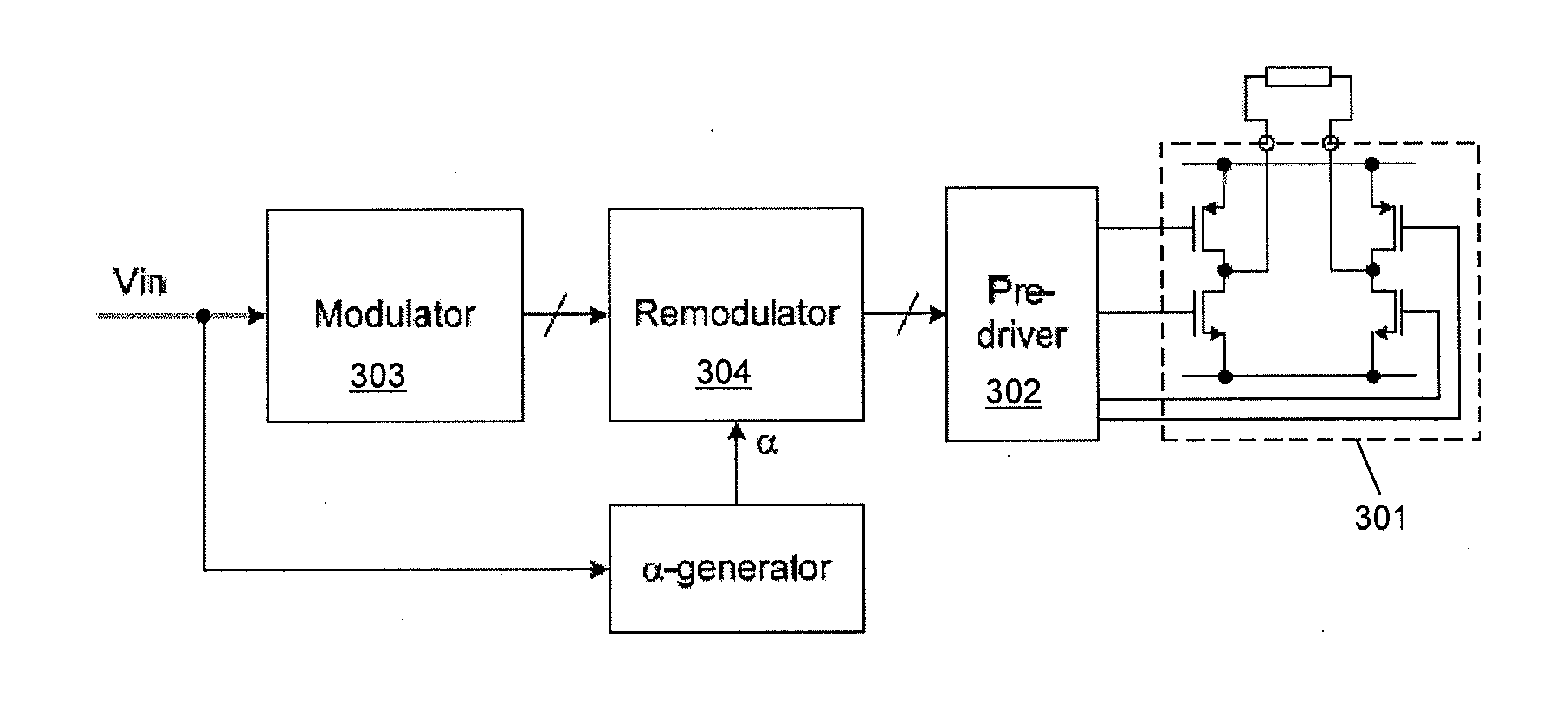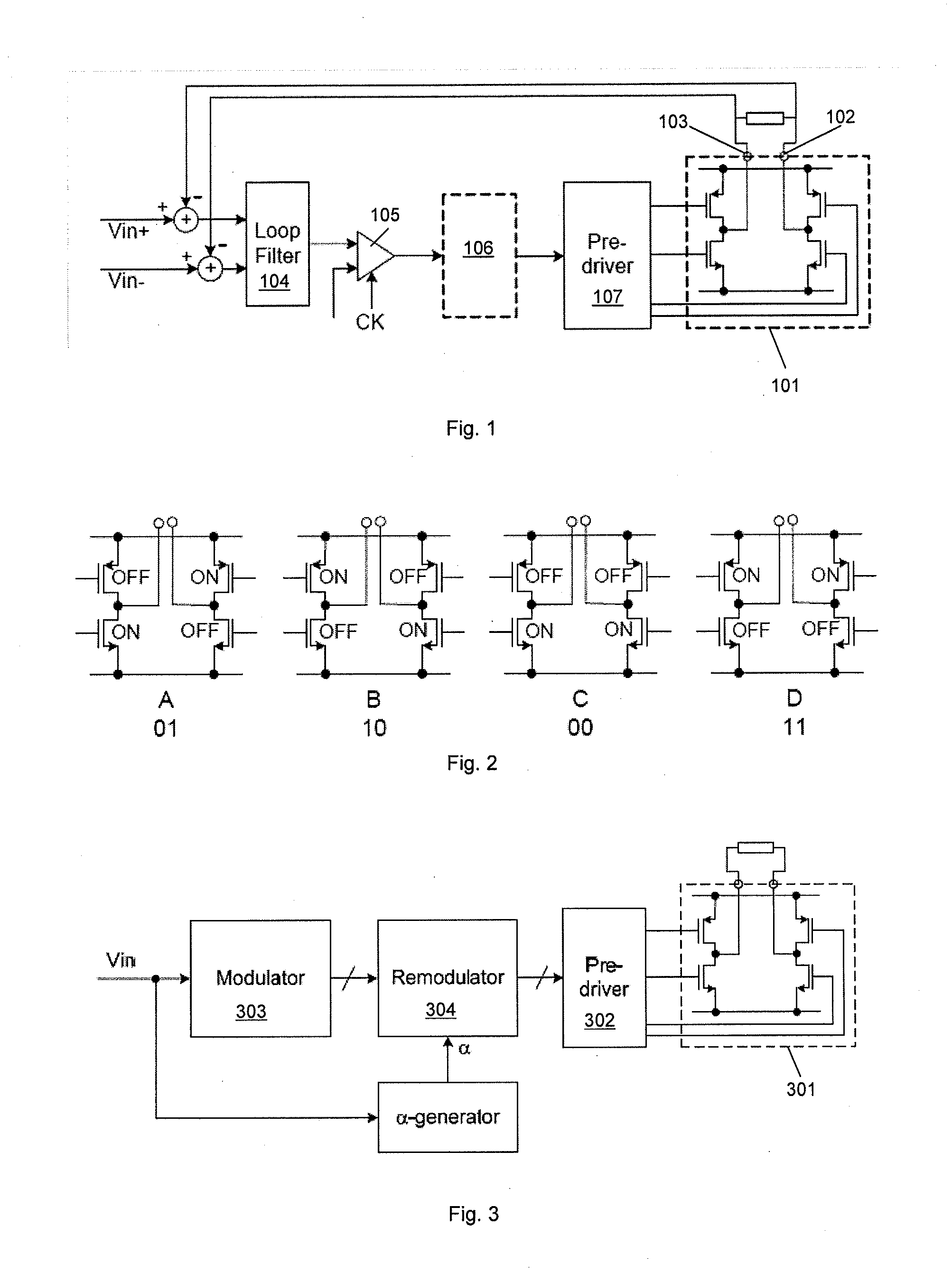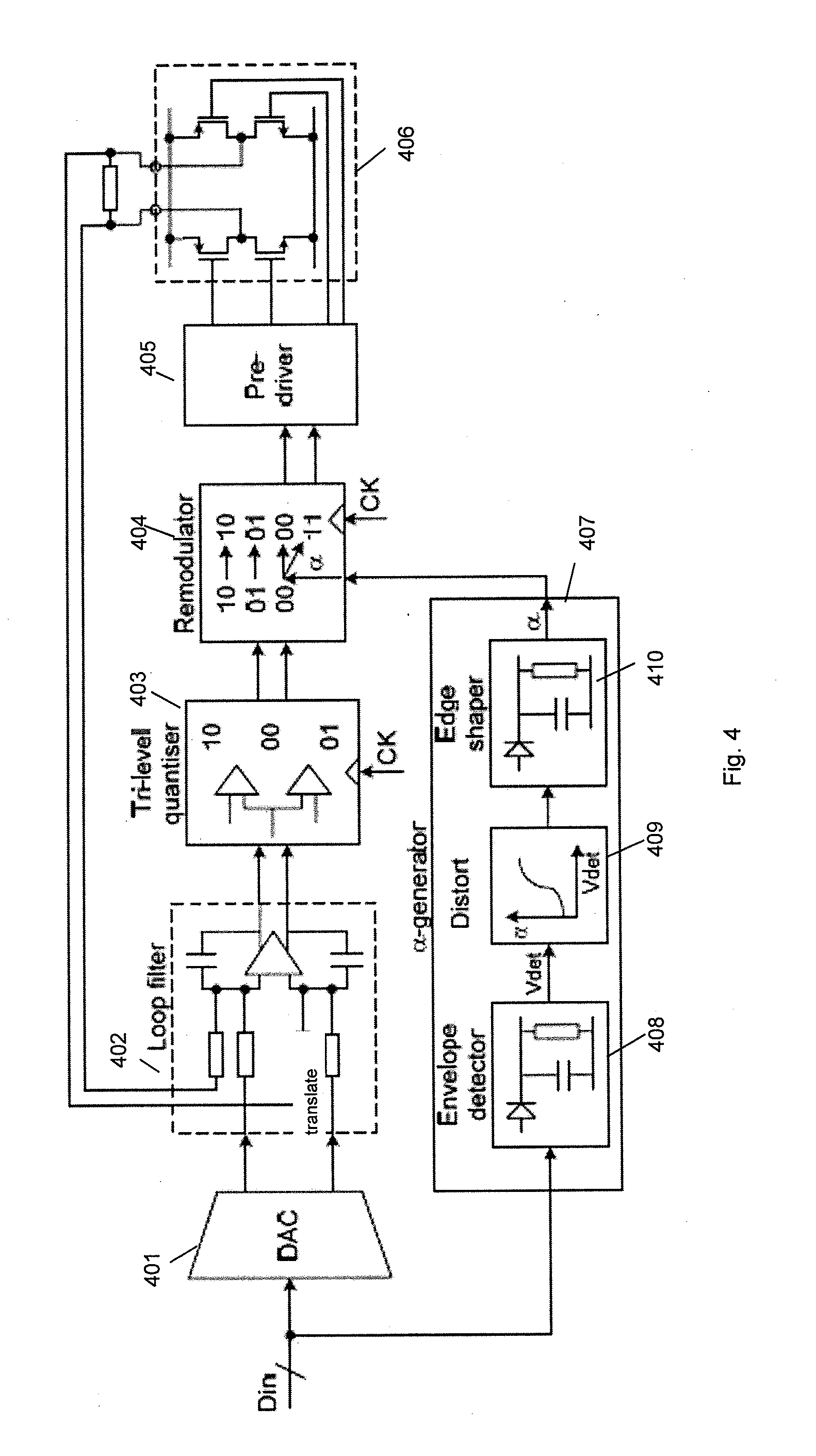Amplifier circuit
- Summary
- Abstract
- Description
- Claims
- Application Information
AI Technical Summary
Benefits of technology
Problems solved by technology
Method used
Image
Examples
Embodiment Construction
[0055]FIG. 3 illustrates the principles of a pulse-density-modulated Class-D amplifier according to an embodiment of the invention. It will be understood however that the principles may be applicable to any type of Class-D amplifier, which are sometimes referred to as sigma-delta amplifiers or switched amplifiers.
[0056]The amplifier arrangement shown in FIG. 3 has an H-bridge stage 301 which is driven by pre-driver circuitry 302 to be operable in each of the four states illustrated in FIG. 2. The amplifier comprises modulator circuitry 303 for receiving the input signal Vin and deriving a control signal indicative of which output state the H-bridge should be switched into. The modulator 303 may therefore comprise a three level comparator as described previously, or more generally any three level quantizer. Thus the output of the modulator may be, for example, a logic +1, 0 or −1 depending on the level input signal. It will be noted that FIG. 3 omits the feedback path discussed above...
PUM
 Login to View More
Login to View More Abstract
Description
Claims
Application Information
 Login to View More
Login to View More - R&D
- Intellectual Property
- Life Sciences
- Materials
- Tech Scout
- Unparalleled Data Quality
- Higher Quality Content
- 60% Fewer Hallucinations
Browse by: Latest US Patents, China's latest patents, Technical Efficacy Thesaurus, Application Domain, Technology Topic, Popular Technical Reports.
© 2025 PatSnap. All rights reserved.Legal|Privacy policy|Modern Slavery Act Transparency Statement|Sitemap|About US| Contact US: help@patsnap.com



